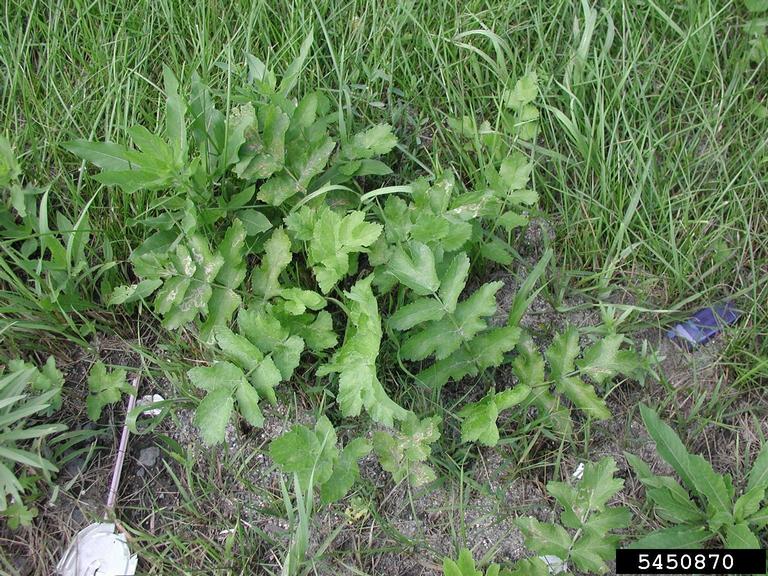|
Wild parsnip (Pastinaca sativa)
Introduced as a food source by European settlers. A cultivar of wild parsnip is still sold in some garden stores.
Why is it a problem? Like most invasive plants, wild parsnip threatens to replace native plants in high quality natural areas, which in turn reduces critical food resources for birds, butterflies, and other wild creatures. Wild parsnip was imported to the United States for food, after which it escaped cultivation. Wild parsnip populations have been expanding, especially along roadsides and in degraded areas like old fields. Contact with the plant’s sap, caused by breaking open the plant’s tissues, can result in phytophotodermatitis, a medical condition where the chemicals of a plant cause the skin to be sensitive to ultraviolet light. Breaking wild parsnip leaves, stems or flowers then exposing the skin to sunlight can result in skin rash, burns, and blisters that are painful and often leave a permanent scar.
How do I manage wild parsnip?
Prevent invasions by restoring degraded areas like old fields or roadsides back to native plants, which through increased resource competition helps prevent invasive plants from forming monocultures. If you’re managing existing parsnip populations, develop a management plan that includes surveys so that you can ensure you’re best prioritizing control efforts. Control of wild parsnip is most successful early in the spring when the plant’s leaves and tap root are small. Smaller plants can be pulled directly from the ground. Once the wild parsnip flowers the flower head and seeds must be removed completely to prevent the distribution of seeds. Because of the plant’s ability to burn the skin, always wear protective clothing. Mowing the mature plant is not advised to avoid spreading parsnip seed and to minimize risk of exposure to the plant’s noxious chemicals. |
|
| habitatmatters.org |
Contact US231-252-4148
3334 Veterans Drive Unit A Traverse City, Michigan 49685 |
Pleasant Peninsula Design, Habitat Matters 2017




